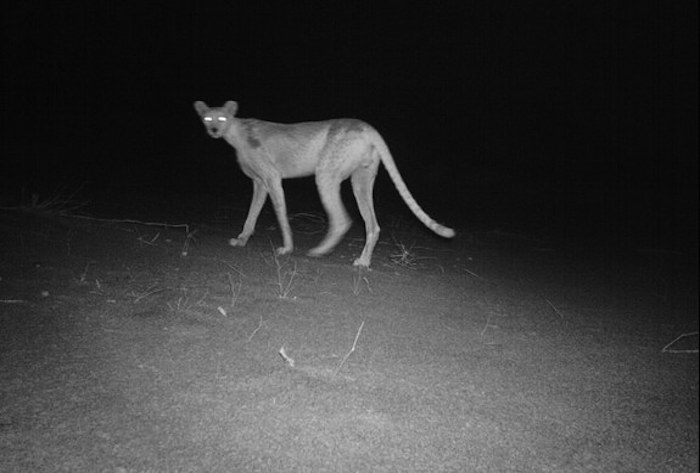
The fastest land mammal on Earth once ranged across 25 million square kilometers, from South Africa to Morocco and Iran to India. Now, the iconic cheetah (Acinonyx jubatus) is a shadow of its former self.
Beset on all sides by vanishing prey, declining habitat and increasing poaching, and human-wildlife conflict, the future is at best uncertain. The International Union for the Conservation of Nature estimates that the cheetah’s range has declined by 89% in recent centuries, with less than 6,700 surviving globally (incidentally, that’s less than the snow leopard).
The cheetah is actually divided up into five rather different subspecies. Of these most well known are the savannah dwelling cats of Southern and East Africa, these are the healthiest populations and also the animals you might be familiar with from TV documentaries. Far less well known is another tiny population of critically endangered desert-adapted cheetah in the Northwest of Africa. Named the Saharan cheetah (Acinonyx jubatus hecki), this subspecies survives only in Algeria, Benin, Burkina Faso and Niger. The total population is thought to be less than 250 individuals, and they are extremely rarely seen.
This Saharan subspecies differs in several ways from the more common southern cheetahs. Firstly, its coat is shorter and nearly white, perhaps as an adaptation to the extreme heat. Secondly, it has fewer distinctive spots, which fade to brown instead of black, and lastly it lacks the characteristic dark tear stripes on the face. Like many desert-adapted species it is also smaller than its more bulky Southern relatives.
Their main prey is thought to be the Dorcas gazelle (Gazella dorcas), but they will also take the formidable Barbary sheep (Ammotragus lervia) or smaller prey such as hares or bustards. Despite being one of the world’s rarest cats, it also has one of the broadest ranges, meaning the species is scattered thinly across miles of inhospitable mountain and desert territory. One estimate found that the home range of each individual might be as large as 1600 square kilometres. This is probably a result of sparsely distributed prey and few water sources.
Because of this sparse distribution, direct observations are rare too with only one or two reported sightings a year. These cats are also far more nocturnal than other subspecies, probably to escape high daytime temperatures and lack of water, making studying them a significant challenge. Indeed, so little is known of this elusive cat that the first photographs emerged as recently as 2009. Researchers using a network of remote camera traps managed to identify four different individuals based on the patterns of their spots.
One of the images came from the Termit Massif in Niger, a vast sprawling protected area also home to the lappet-faced vulture and the critically endangered Addax antelope. Despite being in such low numbers, the Saharan Conservation Fund, which works in this region does at least have evidence that they are breeding in the wild.
This is important, because recent efforts have shown that captive breeding is unlikely to help support cheetah recovery. In other cheetah subspecies for which animals have been taken into captivity, mortality is high and breeding success rates are extremely low. So out there in the dry deserts of Africa, where species threatened by changing climate, hunting and human encroachment, the northwest african cheetah may just be the iconic flagship species that the region needs. If only more people knew that it exists.
[geoip-content not_country=”CA”]ON THE APP
 Lady Cheetah
Lady Cheetah
The cheetah is widely known as the fastest land animal. However, a much less widely known fact is that cheetahs are also the most endangered species of big cats. In Namibia, one woman has committed her life to saving the cheetah by managing a cheetah refuge, educating locals and promoting awareness.
Want to watch Lady Cheetah for free right now? Subscribe to the Love Nature streaming app and start your 30-day free trial of the best on-demand natural history documentaries out there.
[/geoip-content]

